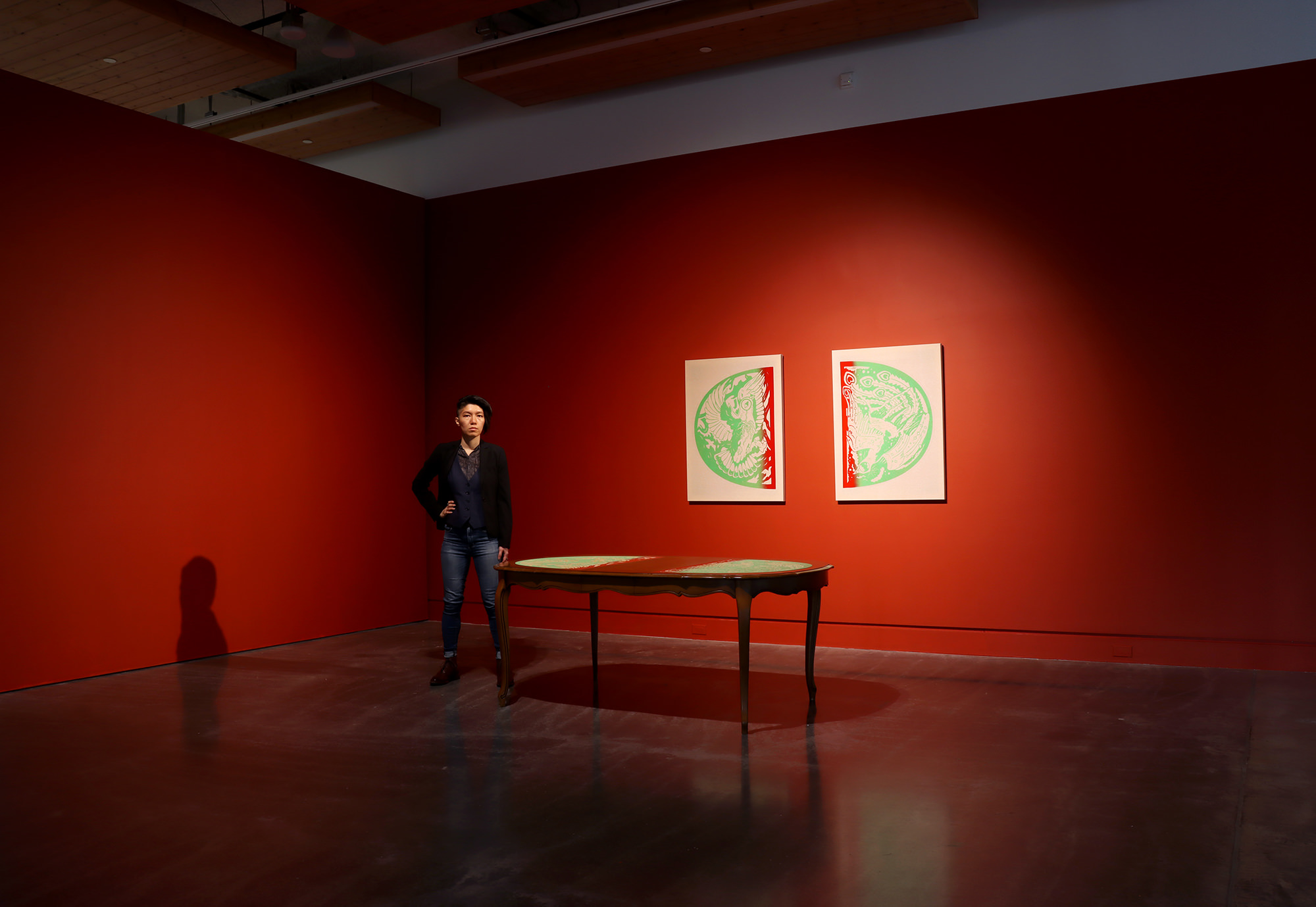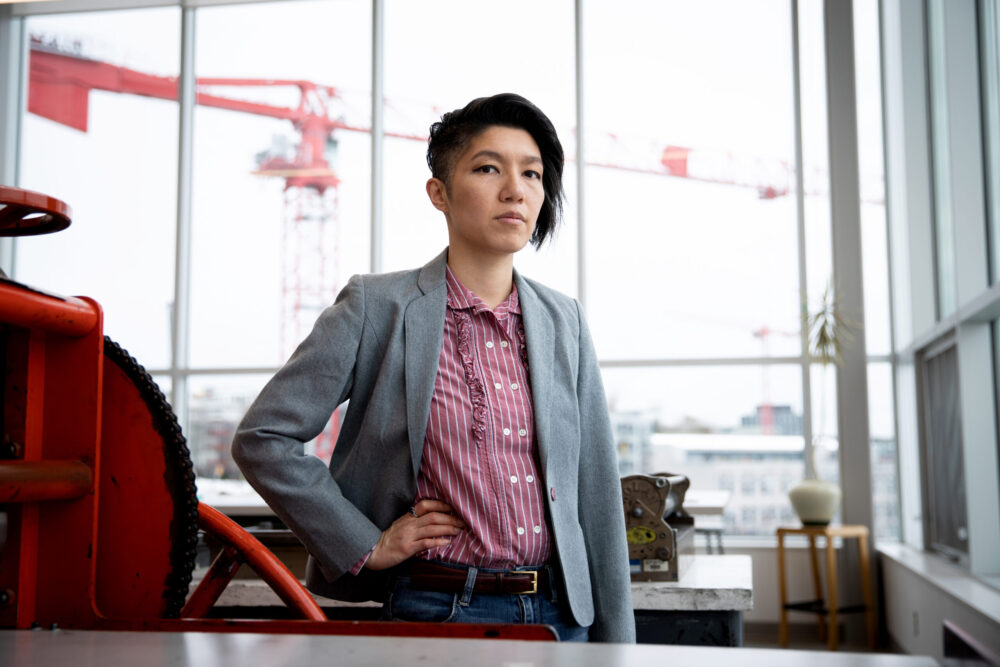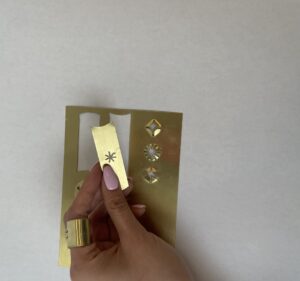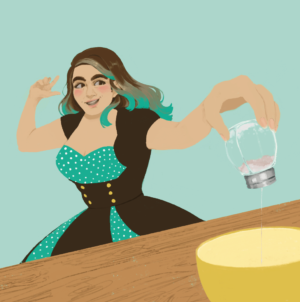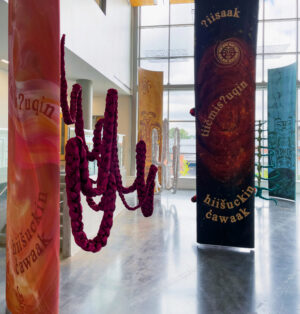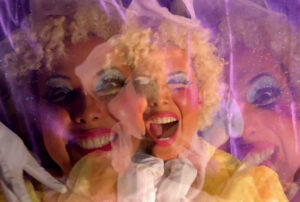The Negotiation Table
Jenie Gao
See it On Campus: Level 2
Visitor InfoLibby Leshgold Gallery
Award Recipient
Mary Plumb Blade Award
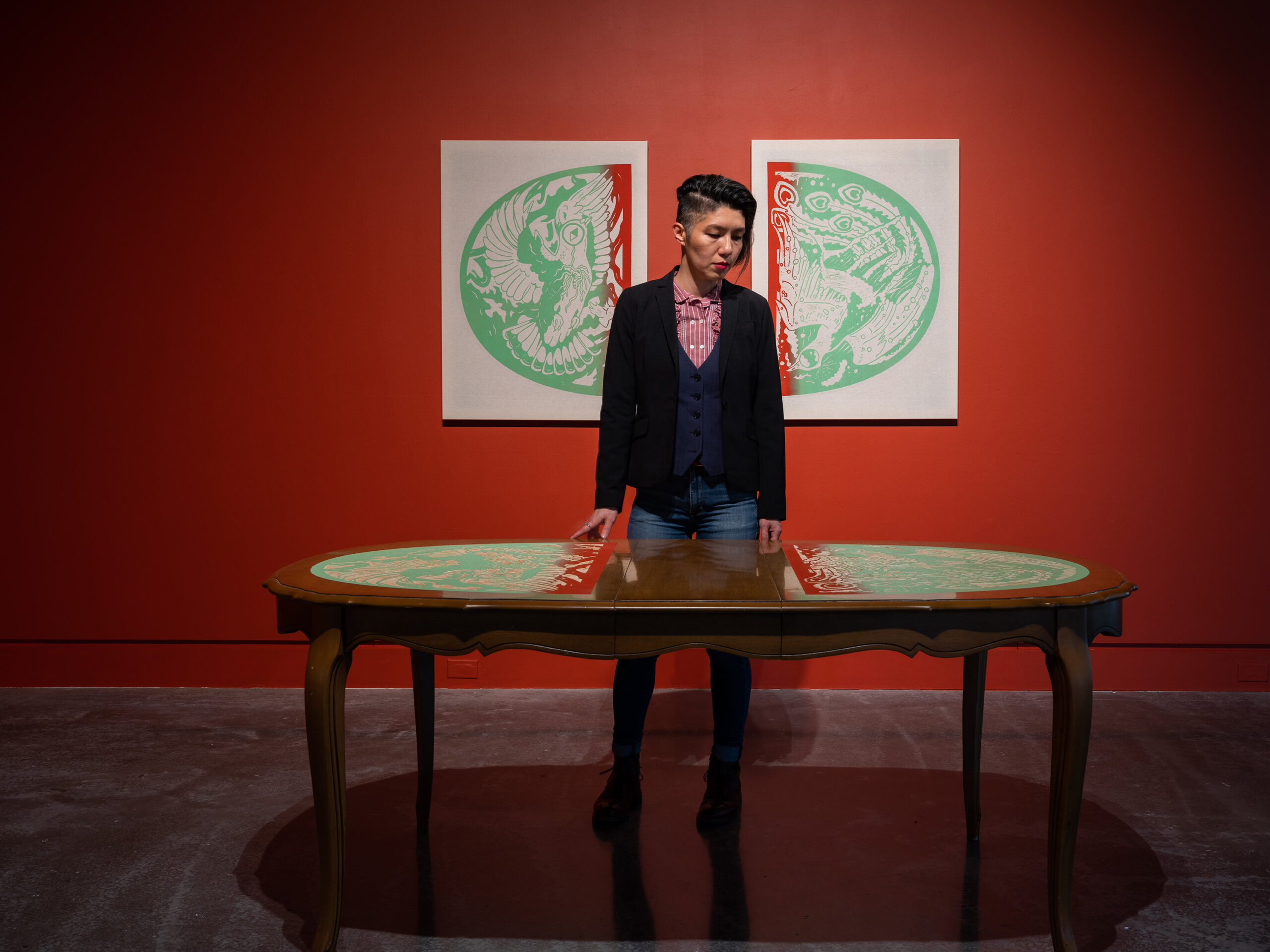
Artist’s Statement
As an artist and maker, I seek to align symbolic representation and systemic change. I want to elevate and make labor visible; prioritize and center perspectives that have historically been excluded; and make space for reflection on how we as artists cultivate our practices and negotiate the spaces in which we work.
I have created a new body of work, which I call my Negotiation Tables. My methodology involves taking hand-carved woodblocks and transforming them into sites of negotiation.
This transformation is in response to the history of how print became indoctrinated in the fine arts, in contrast to its use in political campaigning, protest, and community activation. Historically, print as an invention made it possible to democratize information and communicate with the masses. But to compete with painting—which most other fine art forms are measured against—print needed to become artificially rare. It is best practice in printmaking to destroy one’s printing plates to limit the edition. I have always been uncomfortable with this practice of destroying one’s printing plates, or destroying any evidence of the labor in favor of rarifying the asset. Working through this new methodology, I reflect on what it means for me to challenge print, as a Taiwanese-Chinese American and woman of color who has been made artificially rare in white dominant spaces.
I have centered my research on the act of negotiation, and the critical transformation in my work is about how we, as artists and arts professionals, move away from an industry based in artificial rarity to one of abundance.
Cycle | Breaking and Making
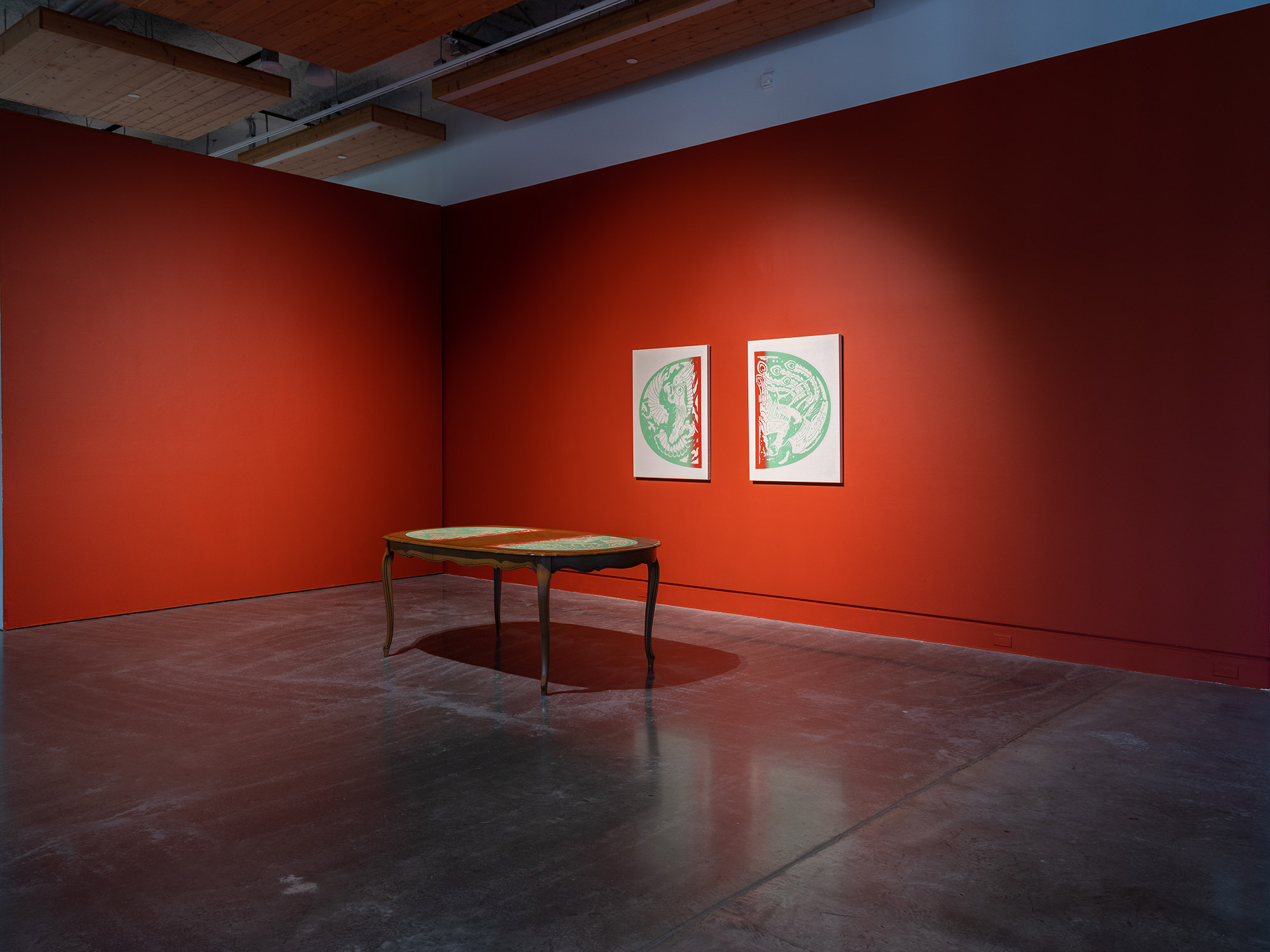
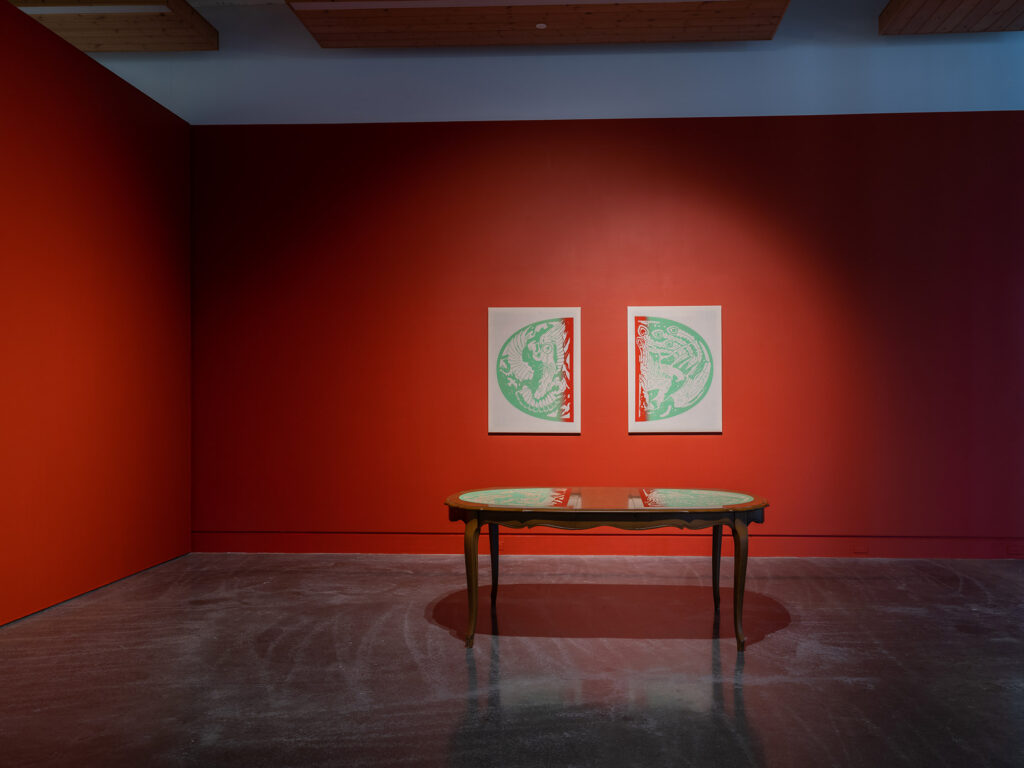

My latest Negotiation Table is entitled Cycle | Breaking and Making. The table I have reclaimed is Canadian-made with US-made parts. It is a knock-off of a popular European furniture style called the Chippendale, which itself is an appropriation of Ming and Tang Dynasty furniture styles. The popularity of this furniture arose around the time that European nations began funding expeditions in search of a shorter route to Asia. Europeans’ obsession with Asia ultimately catalyzed their westward expansion and colonization of Turtle Island.
I have cut into this knock-off of a stolen table design. I have made an indelible mark to keep the history of diaspora in the public’s living memory. By creating a record, remembering becomes a key function in long-term justice.
The woodblocks embedded in the table resemble inlaid jade. They depict two birds, Fènghuáng 鳳凰, also sometimes known as the Chinese Phoenix, and the Homing Pigeon. Fènghuáng is a mythological bird that is purported to disappear during times of political corruption–and reemerge following the rise of new leadership and an era of peace and harmony. The homing pigeon is a bird that I grew up raising, and a personal symbol of diaspora, class strife, and finding home.
Photo on left by Michael Love
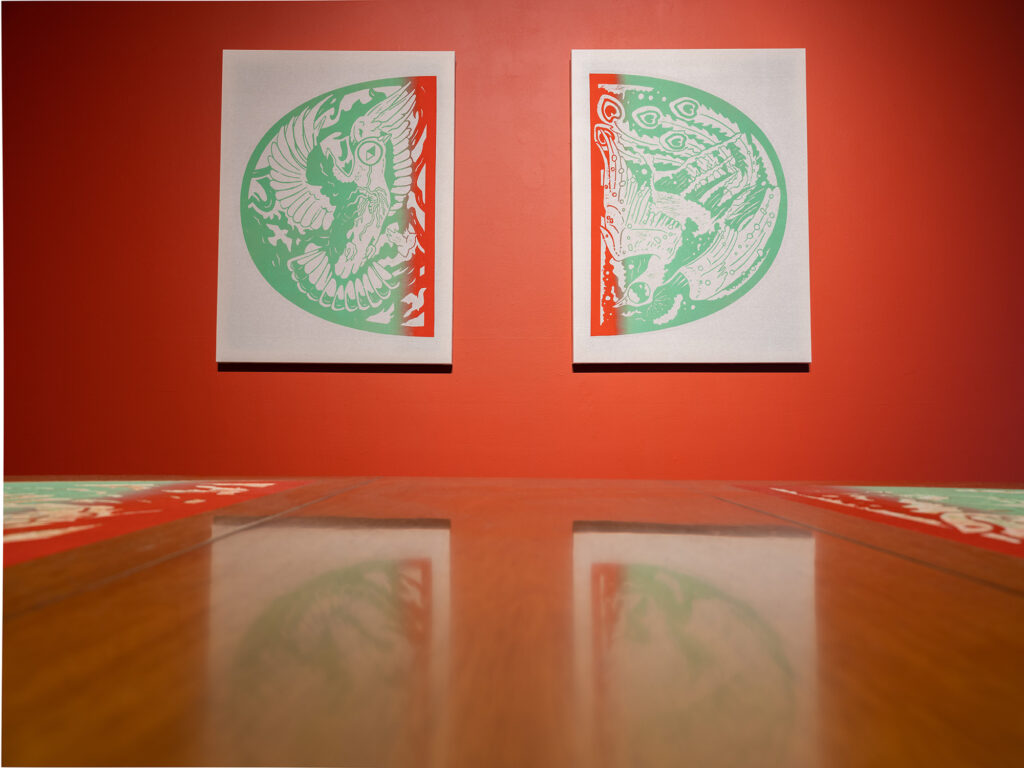
米 mǐ | uncooked rice | It Takes Three Generations

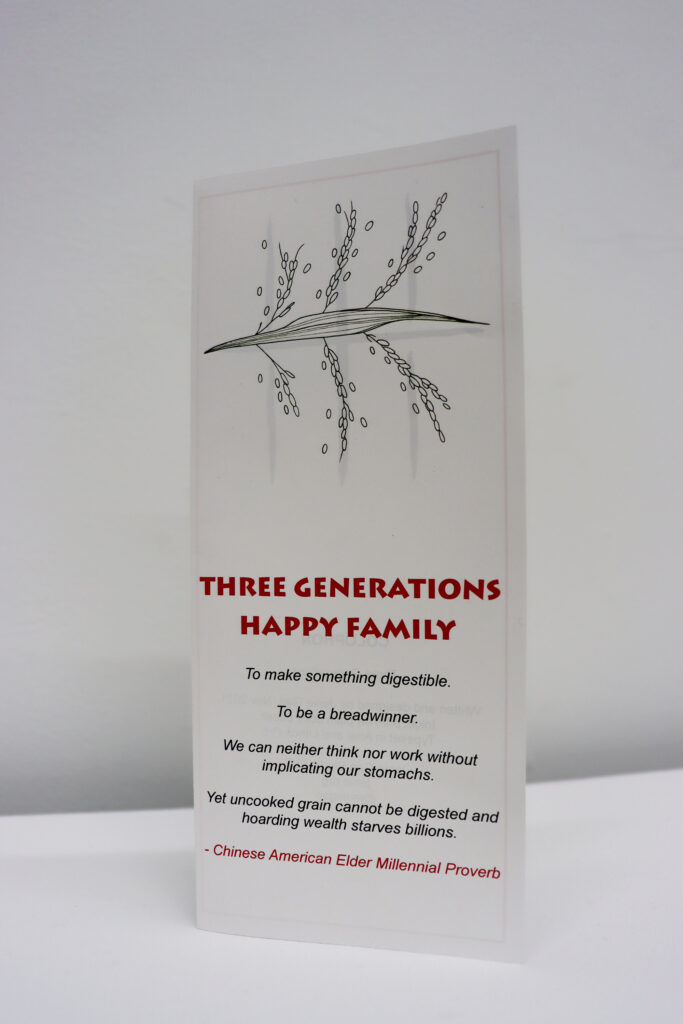
米 mǐ | uncooked rice is an installation based on representational disparities in the US arts industry. mǐ is about unfolding the emotional and personal core for why this data matters, to reveal that underneath the numbers are people’s lives.
米 (mǐ) is the Chinese word for uncooked rice and other grains, a metaphor for that which could sustain us, but in its unprocessed form is indigestible.
Data about who has representation in the art world unfolds to reveal personal stories that constitute the whole. A laminated placemat displays US population percentages side-by-side with representation in US museums, galleries, and private art collections. Bowls on the table are either overflowing or under-filled, based on each population’s representation in the arts. For instance, while white men are 31% of the US (as represented by a 31 ounce bowl), their bowl overflows with 77% of the rice served on the table. Meanwhile, women of color collectively are less than half of one percent of the artists represented and collected in North America; their bowls contain only a couple grains of rice each.
A tri-fold menu unfolds to reveals a timeline of my family’s story, told via food as a political and socioeconomic indicator.
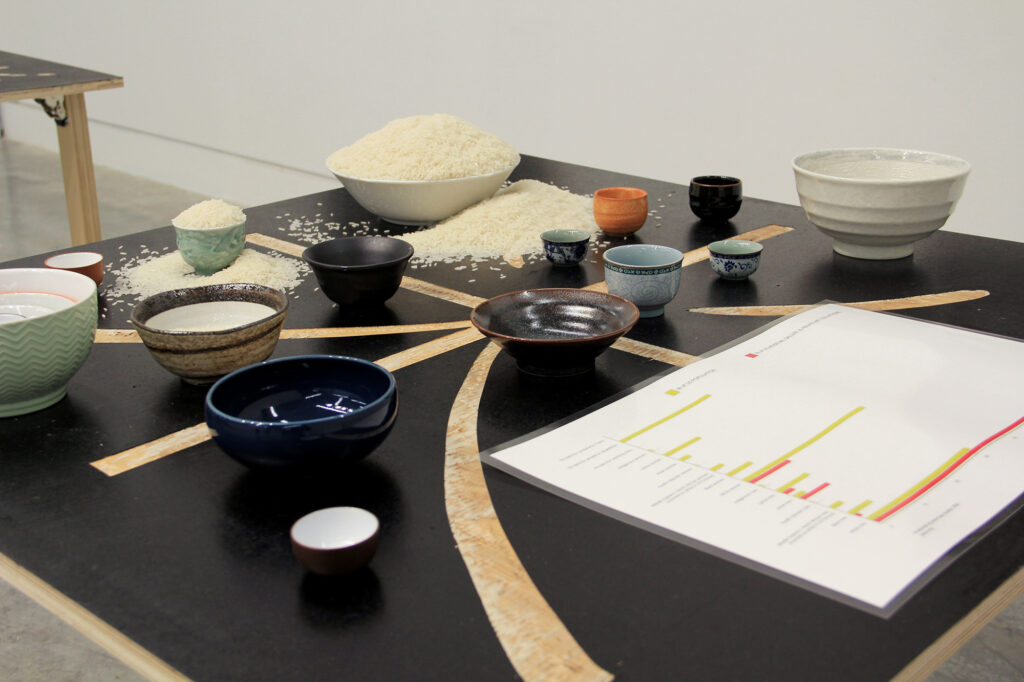

An Ethic is a Root
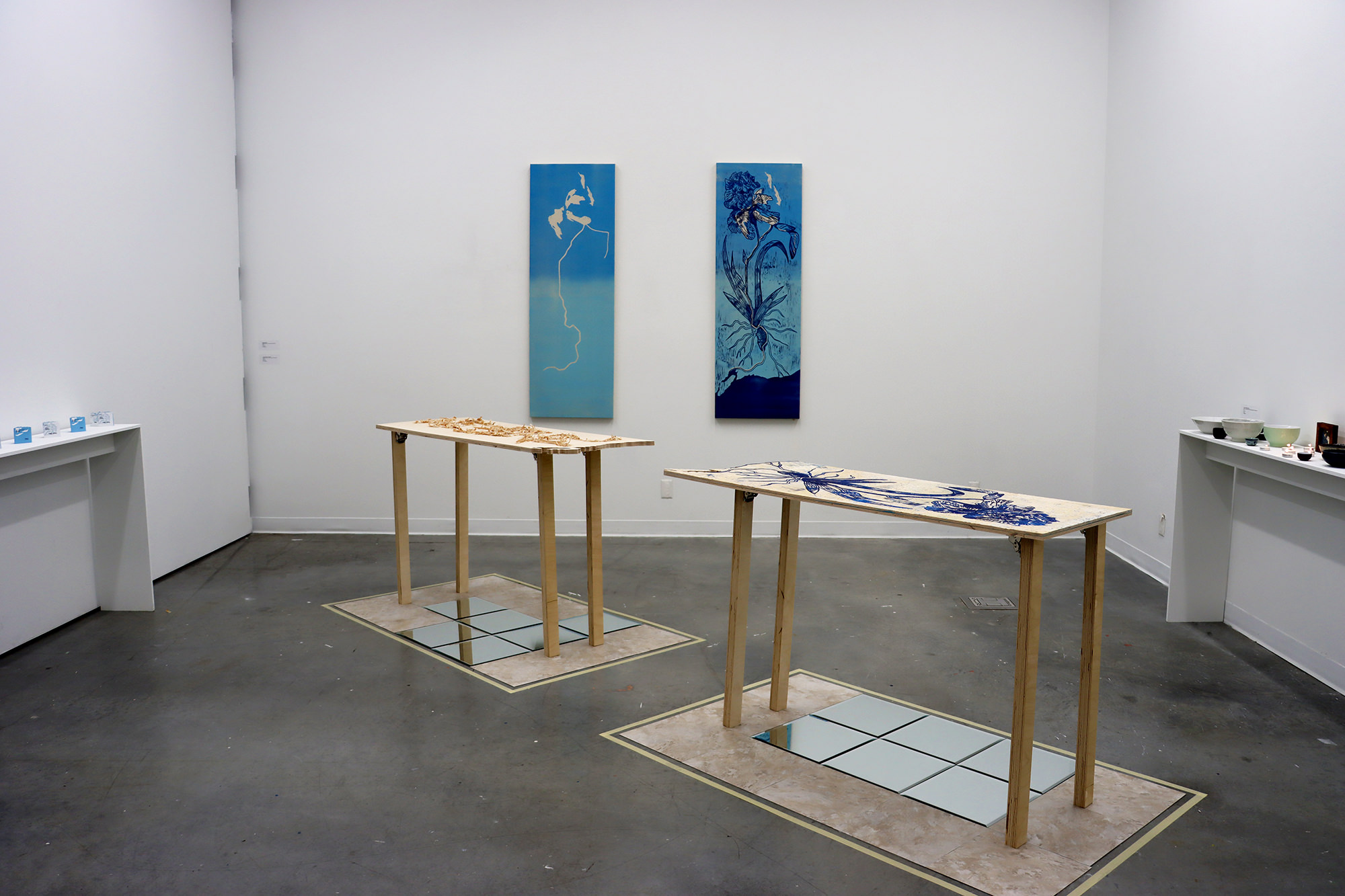
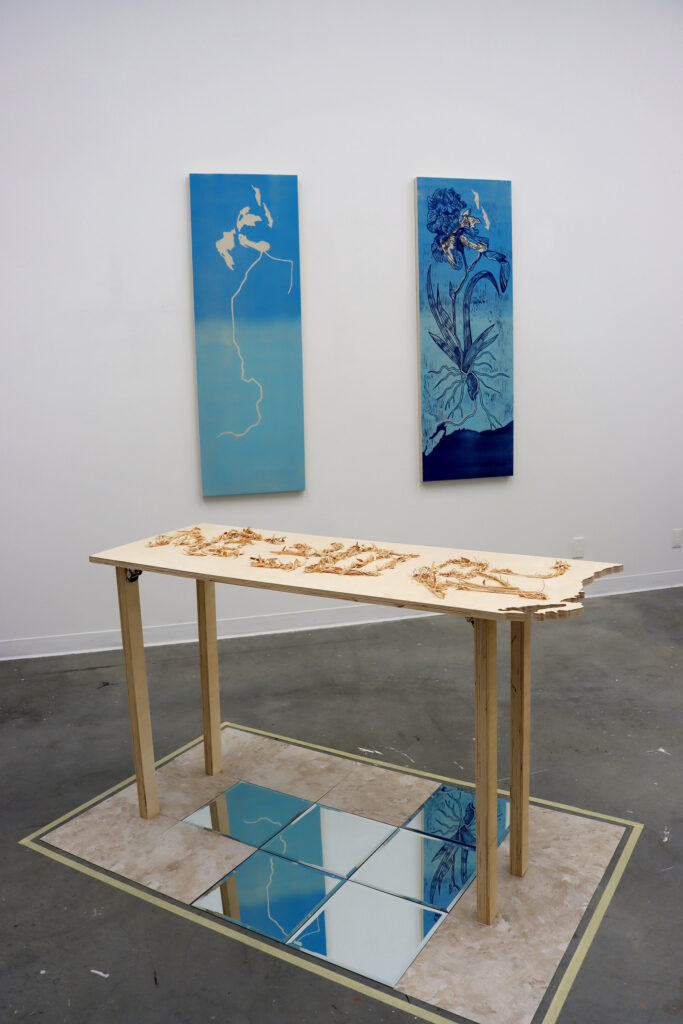
An Ethic is a Root navigates and negotiates how we arrive at our ethics. What do we risk when we uphold our ethics? And what makes the risks worthwhile?
The central image in this series is a map of my migration route, from where I grew up on the lands of the Kansa, Osage, Kickapoo, and Shawnee, to each of my homes including Teejop (land of the Ho-Chunk, Madison, WI) to my current home on the unceded territories of the Squamish, Musqueam, and Tsleil-Waututh in what is called Vancouver, British Columbia.
In the two woodblock prints, I made water, instead of land, the geographic anchor, with the Great Lakes blooming at the top of the map. I oriented the map with my route(s) growing downward.
My mother still resides in my last childhood home in rural Kansas. Agricultural runoff and nearby development have made the soil poor. The land around my mother’s house regularly erodes and floods when it rains.
Yet the iris flower continues to grow here. Irises are known for growing in places with polluted water, effectively removing toxins and holding soil together.
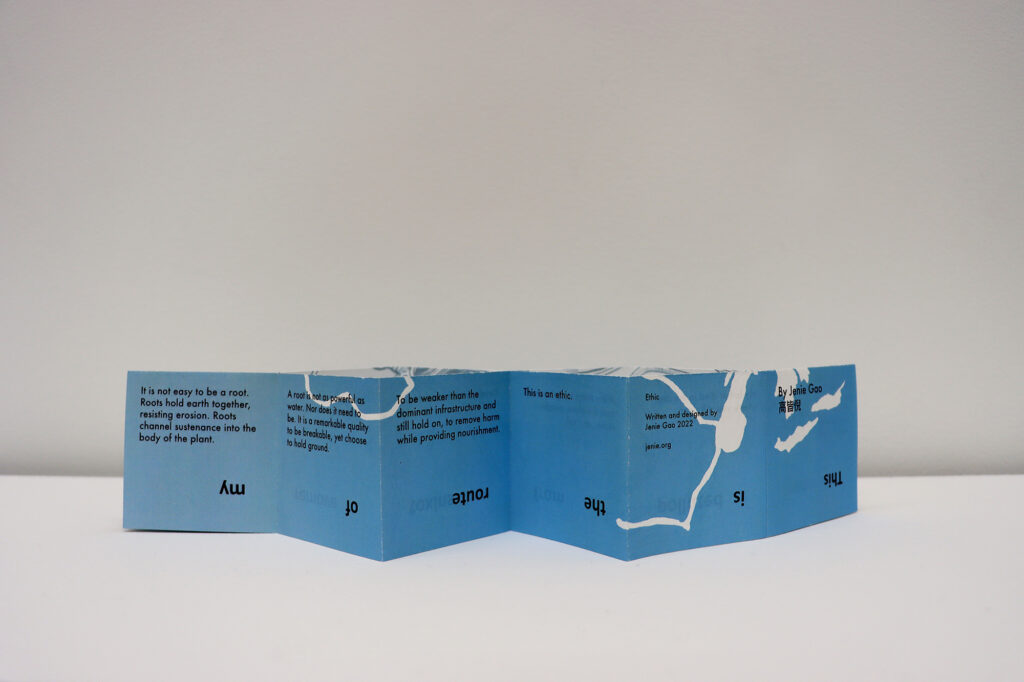
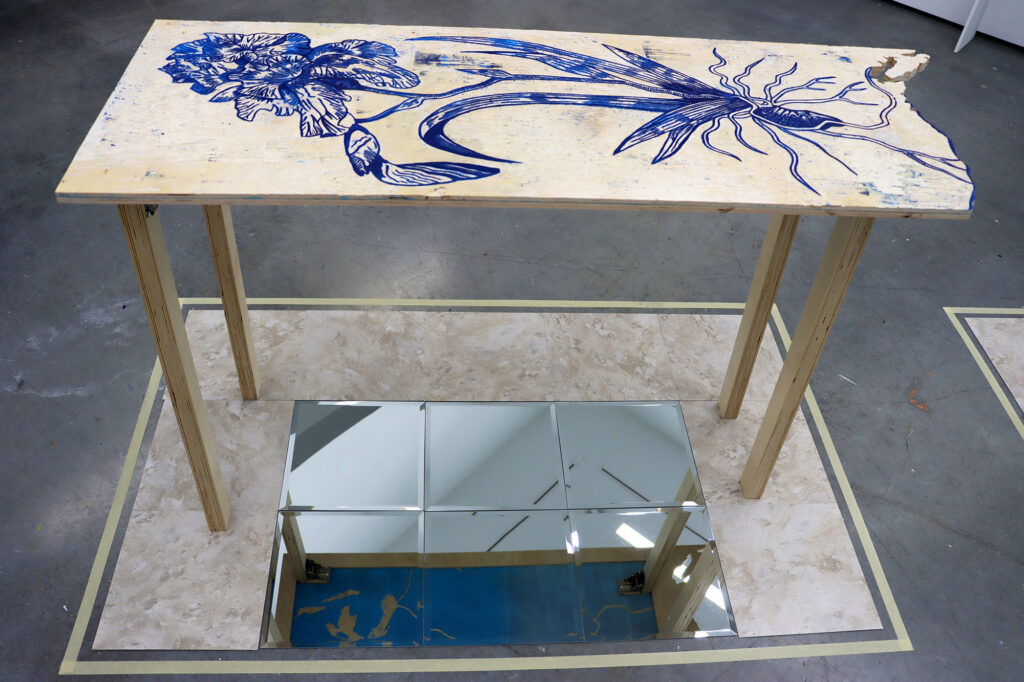
Thesis Conclusion
I have been running a full-time anti-gentrification arts business since 2014, and my time in the MFA has been a self-assigned sabbatical to dig deeper into my research on ethics and equity in an artistic practice.
Beyond this moment, I ask, how can I continue to build towards a generative arts ecosystem? How can I embrace my relationship with leadership and public service? How can I learn to enjoy the fruits of my labor, so that abundance isn’t some faraway ideal, but a joy we can relish in the present, together?
I hope to exhibit this work in venues that want to collaborate with me, not just on the symbolic but on how their organization’s systems can change to prioritize fairness.
I’ve centered my research on the act of negotiation, and the critical transformation in my work is about how we, as artists and arts professionals, move away from an industry based in artificial rarity to one of abundance. I have further situated the work in a vision of decolonization that is not North American centric, but globally connected.
I look forward to following this work with further examples of abundance, and I hope you will join me then, too.
